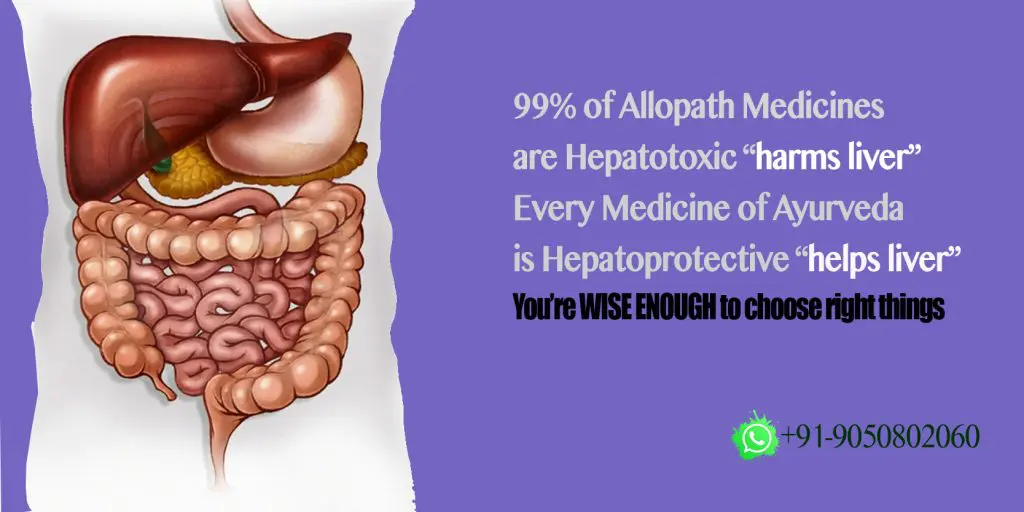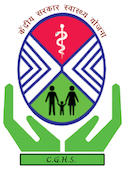Ayurveda is the ancient medical practice of India which still thrives today. Even though its origins are not well defined. The terminology comes from two words in Sanskrit: Ayus meaning life and Veda knowledge or science. So Ayurveda translates as the Science of life. Here we will discuss gastric diseases from an Ayurvedic view point.
Ayurveda is a holistic approach to medicine, which takes into account the whole person, rather than just the isolated symptoms of an illness. It focuses on prevention as well as treatment and believes that the body has an innate ability to heal itself
There are three main principles of Ayurveda: Vata, pitta, and Kapha. These are not physical substances but rather they are concepts that describe how the body functions. Vata is air and ether, pitta is fire and water, and Kapha is earth and water. Each of these principles has its own characteristics and when they are in balance, the body functions optimally. However, when one or more of these principles becomes unbalanced, disease occurs. There is a complex relationship between the doshas and physical and mental health as well as various diseases. This relationship helps in development of an Ayurvedic treatment plan.
This article will explore two common causes of gastric diseases and an imbalance in all the three doshas.
Gastric Diseases
When one has difficulty digesting foods or suffers from pain after eating it is often referred to as indigestion. Indigestion is relatively common and may be caused by such things as stress, anxiety, smoking, alcohol consumption, spicy foods, fatty foods or lack of proper chewing. Attributing all symptoms to indigestion is not accurate since there are many digestive ailments such as ulcers or food allergies. Allergies and stress can cause excess acid production which irritates the wall of the stomach and may interfere with proper digestion. If this condition is persistent, it could lead to ulcers.
An Ayurvedic practitioner will take into account a person’s age, gender, vocation, temperament, eating habits, etc. to help determine what actions might be necessary for treatment. For example, if someone is excessively stressed they may be advised to reduce their intake of cold foods and beverages since cold foods increase Kapha dosha which is already increased due to stress. The practitioner may also recommend that the patient eat smaller meals more often, chewing their food thoroughly. Ayurveda believes that one must chew their food until it is liquefied in order for digestion to begin properly.
Vata Dosha and Gastric disease
Vata is responsible for all movement within the body and governs both nerve impulses and muscle movements. The doshas are present throughout the body but each has its own area of expertise. Vata dosha is located in the colon, bladder, lower abdomen, small intestine, etc., while pitta dosha rules over the stomach, liver, gallbladder, etc., and Kapha dosha controls joints, bones muscles, etc. Wearing clothing made from natural materials can help keep Vata dosha in balance. So can eating warm, moist foods and avoiding cold, dry foods.
When Vata dosha is out of balance, it can cause many problems such as constipation, gas, bloating, diarrhea and stomach cramps. Ayurveda recommends certain lifestyle changes and dietary modifications to help restore balance. For example, oily and heavy foods should be avoided because they increase Vata dosha. Instead, a diet high in fiber and complex carbohydrates is recommended. Also, moderate exercise is beneficial in restoring balance to Vata dosha
There are many other causes of stomach distress which this article does not have space to cover. However, the principles of Ayurveda provide a framework for understanding how different aspects of one’s health are all connected and when they become unbalanced, the disease can result. By using this knowledge, one can develop a treatment plan that is specific to his or her needs.
Pitta Dosha and Digestive system
The digestive system is a complicated and crucial aspect of our body. It takes up a lot of energy since it has to deal with the intake of food- something that must occur on a daily basis. One can imagine, therefore, how important this process is for maintaining homeostasis within the body. The digestive system works at high speeds to break down different substances (proteins, carbs, etc) into smaller molecules. These molecules are absorbed by the small intestine and pass through to the bloodstream where they provide nutrients for cellular activity. Digestive problems such as heartburn or stomach pain may arise when there is an imbalance in Pitta dosha
Pitta (literally meaning ‘fire’), like all doshas, governs certain physical and emotional qualities. It is located in the stomach, small intestine, pancreas, and liver. When Pitta is in balance, it helps with the digestive process by breaking down food and converting it into energy. However, when Pitta becomes unbalanced, it can cause problems such as heartburn, acid reflux, indigestion, and ulcers. Ayurveda recommends certain dietary modifications and lifestyle changes to help bring Pitta back into balance. For example, a person with an imbalanced Pitta should avoid spicy foods, alcohol, and caffeine. They should also eat cooling foods such as fruits and vegetables.
Kapha Dosha and Gastric Disease
As mentioned earlier, Kapha dosha is responsible for the lubrication and structure within the body. It is located in the chest, lungs, throat, head, and sinuses. Kapha is also responsible for providing energy to the body. When Kapha becomes unbalanced, it can cause problems such as a runny nose, congestion, postnasal drip, and a feeling of heaviness in the head. Ayurveda recommends certain dietary modifications and lifestyle changes to help bring Kapha back into balance. For example, Kapha individuals should avoid eating sweets and oily foods. They should also increase their intake of bitter and astringent foods. They should also exercise regularly to help increase energy levels
There are many other causes of stomach distress which this article does not have space to cover. However, the principles of Ayurveda provide a framework for understanding how different aspects of one’s health are all connected and when they become unbalanced, the disease can result. By using this knowledge, one can develop a treatment plan that is specific to his or her needs.

Diseases caused in gastrointestinal system:
- Fatty Liver:
Fatty Liver is a condition where your liver stores extra fat. Excessive alcohol consumption, and obesity are two main causes behind this condition. And once severe it may lead to liver failure. Loss of appetite, fatigue, itchy skin, and abdominal pain with swelling are some common symptoms of fatty liver. Ayurvedic Treatment for Fatty Liver - Hepatitis:
It is mainly due to a viral infection, but drugs, toxins, and side effects of medication can also be the causes of hepatitis. Hepatitis is of five types hepatitis A, B, C, D & E. Symptoms are flu-like with dark urine and pale stool. - Irritable Bowel Syndrome:
Poor lifestyle, stress, and eating habits cause this serious condition of intestines. It includes prevalent symptoms of diarrhoea, vomiting, abdominal pain, and nausea. - Liver Cirrhosis: Cirrhosis means damage of healthy tissues into scar tissues. In liver cirrhosis, the tissues of the liver damages due to long term effects of alcohol consumption and poor lifestyle. Symptoms include abdominal swelling with pain, fluid retention, yellow skin, and itchy skin.
- Ulcerative Colitis: This affects the inner lining of the large intestine and rectum. These are developing gradually with ulcers and long-lasting inflammation. The leading causes are infections; weaken the immune system, unhealthy lifestyle, and alcohol consumption.
Ayurveda about digestive system
The digestive system is one of the most important systems in the body according to ayurveda. The digestive system digests food and converts it into energy for the body. Poor digestion, called aamshaya kopa, is one of the most common problems related to the digestive system. It happens due to a vitiated or debilitated state of pitta dosha which is responsible for metabolism and enzymes needed for digestion.
Digestive disorders are documented in Ayurveda since at least 5000 BC. In ayurveda, these conditions are believed to result from impaired agni (digestive fire). The digestive system has three main properties that determine health: ojas (“vigor” or “radiance”), tejas (“heat”, “fire,” or “susceptibility to disease”), and vikas(“elasticity” or “dynamism”). Ojas and tejas are produced by agni, and vikas is derived from ojas.
Agni is responsible for the proper ripening of food, aeration of blood, transformation of dense tissue to liquid, digestion of food, absorption of nutrients through the intestines, and elimination of wastes.
Ayurveda about causes behind gastric issues
Ayurveda identifies several causes for a vitiated state in pitta dosha including
- eating too many hot spicy foods
- consuming alcohol
- caffeine (such as coffee, tea, chocolate or cola)
- tobacco products or drugs that are stimulants.
- someone eating too much fried or fatty foods.
- eating before previous meals digest.
- eating during indigestion.
- emotional stressand mental tension.
Know more about Ritual of Eating as per Ayurveda
Pitta is a mix of water and fire. And it flows through the body in channels called shrotas, because of the “water” contebt in this.
The main sites where pitta dosha accumulates are the small intestine, stomach, sweat glands, blood and fat tissue. Vitiated pitta can cause such health problems as acne rosacea (reddish or flushing skin on nose and cheeks), heartburn, ulcers (mouth or intestinal), acid reflux disease (gastroesophageal reflux disease [GERD]), anxiety, anger, irritability; allergies; candida accumulation; diabetes mellitus; dysentery (bloody diarrhea), heart disease (including coronary artery disease and atherosclerosis), hypertension (high blood pressure), and stroke.
How does Ayurveda treat Gastric Diseases ?
Ayurveda is a holistic system of medicine that originated in India over 5,000 years ago. Ayurveda seeks to prevent and treat disease by restoring balance within the body. In particular, Ayurveda focuses on the three doshas, or energies, that make up every individual: vata, pitta, and kapha. Each dosha associates with certain qualities and characteristics. For example, vata associates with air and movement, pitta with fire and transformation, and kapha with water and stability.
When it comes to treating gastric diseases, Ayurveda takes into account the individual’s unique constitutional makeup. The goal is to restore balance within thebody, not simply to suppress symptoms.
In order to treat a condition effectively, Ayurveda first diagnoses the disorder as either
1) Tridoshic (affecting all three doshas); or
2) Specific (affecting only one dosha).
An example of a tridoshic gastric disorder would be acidity. And an example of a specific gastric disorder is- some ulcer due to Pitta aggravtion.
In these cases, treatment typically involves detoxification and dietary modifications such as eliminating certain foods from the diet according to the principles of “ahara roga”. When it comes to tridoshic disorders, however, Ayurveda aims at strengthening andharmonizing the body as a whole, rather than simply eliminating the underlying cause of the disease.
There are many different Ayurvedic treatments for gastric diseases, depending on the individual’s constitution and the nature of the disorder. Some of the most common treatments include:
• Panchakarma:
A detoxification treatment that involves cleansing the body of toxins through a series of massages, enemas, and eliminations therapies.
• Herbal remedies:
Herbal remedies are used to treat a variety of gastric disorders, including acidity, indigestion, and ulcers. Some common herbs used in Ayurveda for gastric diseases include ginger, turmeric, and holy basil.• dietary modifications: Ayurveda recommends specific dietary modifications for different gastric disorders. For example, people with acidity should avoid acidic and spicy foods, while those with ulcers should avoid foods that are high in fat or protein.
Limitations of western medicines in treating the Gastric diseases
Western medication involves the temporary treatment of the disease and not the removal of the root cause. For example, if there will be a rash on the body, the western medicine treatment will give an anti-inflammatory tablet, but the underlying cause of that rash is undetermined. That rash was may be a symptom of some disease.
With the advent of western medicines, diseases such as Gastric were easily treatable. However, with the increase in resistance of these diseases to western medications, their efficacy is now being questioned.
One of the main limitations of using western medicines to treat Gastric is that they are only effective in treating symptoms and not the root cause of the disease. Additionally, these medications are often expensive and have a range of side effects.
Alternative therapies such as Ayurveda offer a more holistic approach to treating Gastric and are effective in treating the root cause of the disease. Additionally, these therapies are affordable and have few side effects.
Thus, it can be concluded that alternative therapies such as Ayurveda are more effective in treating Gastric than western medications. Additionally, these therapies are more affordable and have fewer side effects.













